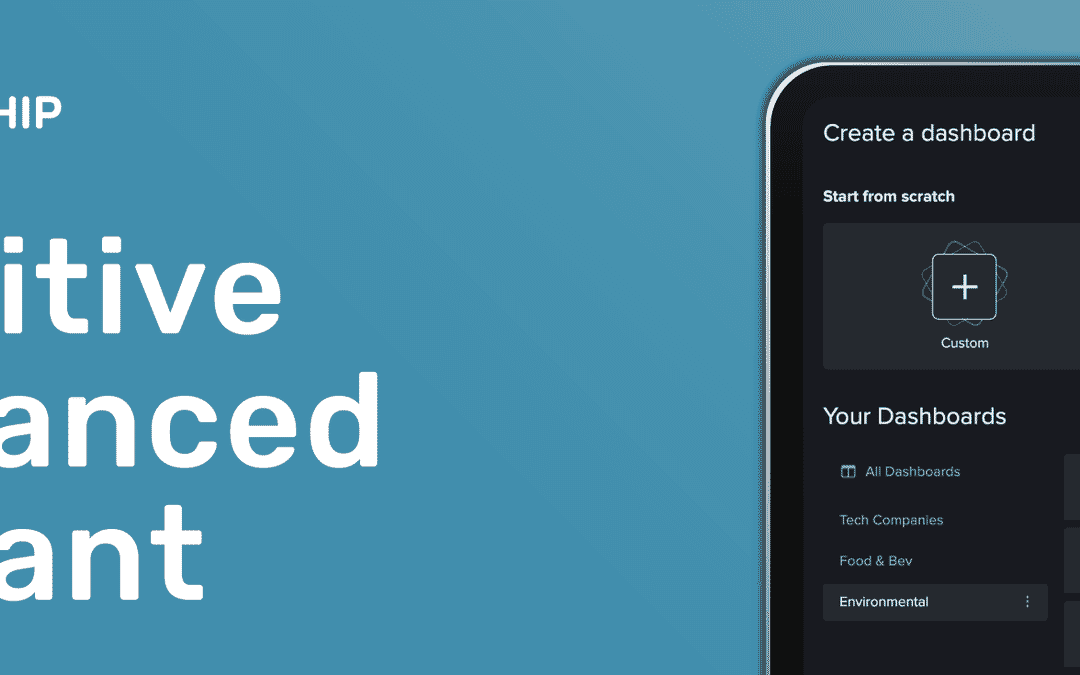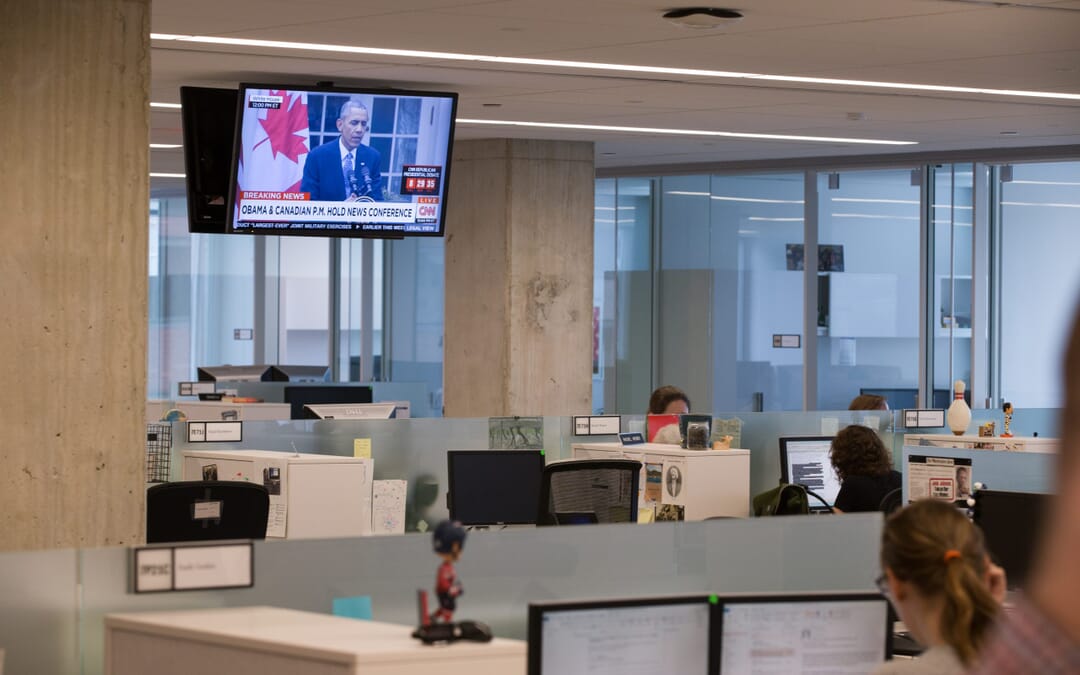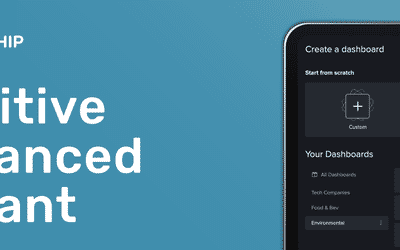We check in with CNN’s Head of Social Media to see how the network’s social media team works, how they’re connecting their audience on different platforms, and how they’re planning to use social on election night.
2016 has already been a whirlwind in international news, and the keystone event of the year is yet to come.
Throughout the year, CNN have been at the heart of the presidential campaign, broadcasting debates, conventions and other key moments to a vast global audience on TV.
But increasingly, the network has ambitions to own not just the TV screen, but also social streams, on whatever platforms audiences are engaging.
NewsWhip data shows that CNN has a huge social presence. Backed by a large team, the publisher often leads the way in adopting new formats like live video, chatbots, messaging apps and more.
Samantha Barry is the Head of Social Media for CNN. Heading up a major global team with responsibility for the network’s huge presence the likes of Facebook and Twitter, to newer avenues like messaging apps, Samantha’s role extends right across the spectrum of CNN’s coverage. We recently caught up with her to get a sense of how the CNN social media team works together, and what they’re planning for election night 2016.
Hi Samantha. Can you give us an overview of how the social media team at CNN operates?
My team is quite a global team. There’s a social publishing team under Ashley Codianni – they’re the team that publishes what we do on our major platforms, such as the CNN and CNN International pages on Facebook and Twitter, Snapchat, Instagram and messaging apps. That team is responsible for what we push out, and spans New York, Atlanta, Hong Kong and London. So we’re 24/7 global social publishing.
Another team we have is social discovery, under director Justin Lear. That’s the social news gathering unit, based mainly in Atlanta. This team uses social media as a news-gathering hub. So they’re looking at what’s trending and what people are talking about, using Spike and other social tools. They’re also the team that verify video, and feed all of CNN with digital and social content.
The third team is the social TV team. They’re a US-centric team under Eric Weisbrod, and they work on the second screen experience, using social to push key moments on TV. They take the best of our TV and work on how that’s distributed across social platforms. They’ll cut a video square and put subtitles on it.
Social is a very global team with massive audiences in the US and around the world. The three teams work extremely closely with each other.
How important is distributed content for CNN?
It’s huge for CNN.
As an organisation, we are all-embracing of going where the audience is, and a distributed strategy is very important for us. I think of how we did the primary debates in Las Vegas, and they were record-breaking TV numbers. They were also record-breaking social numbers. A two-hour TV event from CNN ended up being a two-day global trend across Facebook and Twitter for CNN.
We’re letting audiences know that we’re putting these events on and we’re the place to go for news, and we’re also giving them news, even if they can’t get to a TV.
How do you differentiate CNN as a brand on social media? How do you build an audience that will come back?
 The mission statement for social at CNN is creating a news habit for every generation on every platform. That’s why I’m excited about reaching 13 to 17 year olds on Kiks (pictured), and they’re engaging with our content there. Those 13 to 17 year olds may not be engaging with CNN content anywhere else, but they’re engaging with us on Kik. So we’re creating a CNN news habit for the next generation, for when audience behaviour has changed so dramatically in terms of how we get news.
The mission statement for social at CNN is creating a news habit for every generation on every platform. That’s why I’m excited about reaching 13 to 17 year olds on Kiks (pictured), and they’re engaging with our content there. Those 13 to 17 year olds may not be engaging with CNN content anywhere else, but they’re engaging with us on Kik. So we’re creating a CNN news habit for the next generation, for when audience behaviour has changed so dramatically in terms of how we get news.
If you want to dig into that, I say to my team that I want them to try new things and build new audiences. If you’re doing the same thing on Instagram that you were doing six months ago, you’re probably not doing it well. You’ve got to be looking at Instagram stories, and you’ve got to be putting more emphasis on video.
It’s the same thing with Facebook. Not only do platforms move really fast, audience behaviour moves really fast. You have these platforms evolving in the way people consume content. You also have audience behaviour evolving. That’s why we’re in messaging apps – we want to learn about how people share content in those worlds. We’ve seen the growth of people sharing in dark social and messaging apps. We want to be there because that’s where audiences are sharing news and content.
What’s your experience of native video and Facebook Live been?
We’re in a very lucky position with video. CNN is the leader in video news, and we have this broadcasting beast domestically and internationally. Video has been a big focus for us, and you’ve seen that on our pages, where not only have we upped the amount of native video we’re uploading, but we’ve gone all-in on Facebook Live as well. It’s been amazing for us so far.
One of the things we don’t want to do on Facebook Live is it to be TV-lite. We do TV really well – on TV. We want Facebook Live to be something different.
If you look at what we did with the Trump Tower story, it was an unnarrated stream, we were in the comments section telling people what they were seeing, and people were engaging with us in a way they weren’t on other platforms. It was one of our most powerful streams.
[fb_pe url=”https://www.facebook.com/cnn/videos/10155153802976509/” bottom=”30″]
We need to show viewers something new on Facebook Live. We’re in a lucky position where visuals and video is the heart of what CNN is.
You mentioned earlier the importance of moving fast in social media. How important is that for your team?
It’s really important. That’s where I see newsrooms and journalists fail. Maybe they have one social platform that they’ve been on since they’ve been a journalist, and they never explore others. Even as a journalist, you should be lurking on a lot of these apps. You should understand what Kik is, or how Snapchat Stories work. Or you should understand how people now get information on Instagram Stories. Our social unit at CNN is so curious about new ways of telling stories.
You always need to be willing to iterate and try new things on social. And some of them won’t work. In the social world more than anywhere else across legacy media organisations, it’s ok to fail, but fail fast.
With the election a few short weeks away, how much of an opportunity does that present for CNN on social media?
Election night is the time when everyone has CNN on. We’re the place to go for TV and digital, and we also want to be the place to go on social. We’re working on that, and we have a lot of fun things planned for election night.
We’re going to be very conscious of reaching our audiences across Facebook, Snapchat and Twitter. But we’re also going to live up to the CNN standard. We will work together as a multi-platform media company to make the calls at the right time.
We saw this play out in the primaries, where we made the calls across TV, digital and social at the exact same time. So we work together as a unit to make sure as a network, we make that call in unison. The same will happen on election night. All of social and digital and TV will be working to make sure there’s a crescendo of results as they happen.
We got it right during the primaries, and we know how this plays out. Across social, we used TV language like ‘stand by for a projection’, and people did respond to it because they were used to that type of language.
Election night will be amazing. The amount of things we’ve done that have been different and interesting – we did cinemagraphs for Instagram. They debuted on on our Instagram page and are now ubiquitous. They are used in every debate, every promo, and they were done first for a social account.
We had interviews with every single candidate for Snapchat. We did instant meet-ups at some of the debates. We have pushed the boundaries of creativity in election storytelling across CNN digital and social, and it’s been extremely fun to watch.
Finally, what advice would you give to other publishers looking to build their audience on social media?
I think it’s interesting for a name like CNN because we are a large legacy news organisation. For smaller newsrooms with less of a following, social media gives a great opportunity to engage with your audience in real time. Go into the comments and give context. Answer questions and engage with the audience.
We have some of our talent answering questions on Facebook Live in real time. They are services that viewers haven’t had before. There’s something really engaging in that.=
Honestly, listening to your audience is so important. We listen through the data and insights that we gather. What worked, what didn’t work? Constantly asking those questions as social media editors is important. It sounds simple, but so many don’t do it. Look at your insights. What is it telling?
Most of all, review and experiment constantly, and try new things.
Subscribe to our blog for more interviews with media industry leaders, social media analysis and exclusive social publishing data.












